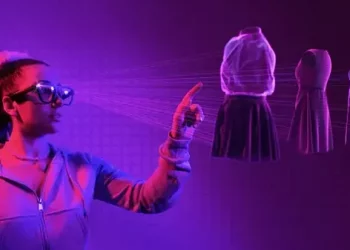In recent years, the concept of the metaverse has captured the imagination of technologists, futurists, and everyday internet users alike. Portrayed in science fiction as virtual worlds where people live, work, and play, the metaverse is increasingly becoming a tangible reality thanks to advancements in blockchain technology, virtual reality (VR), augmented reality (AR), and artificial intelligence (AI). This article aims to delve deep into the workings of the metaverse, exploring its underlying architecture, the mechanics that enable its functionality, and the vast potential it holds for transforming human interaction, commerce, and beyond.
What is the Metaverse?
At its core, the metaverse can be understood as a collective virtual shared space, created by the convergence of virtually enhanced physical reality and physically persistent virtual worlds. Unlike traditional virtual environments, the metaverse aims to be seamless, interoperable, and persistent—a digital universe that exists parallel to our physical reality. This concept was popularized by Neal Stephenson’s 1992 science fiction novel “Snow Crash,” where he envisioned a fully immersive digital realm where individuals interact, transact, and build.
Today, the metaverse is taking shape through interconnected virtual experiences that span across various platforms, applications, and devices. It encompasses virtual reality environments, augmented reality experiences, virtual economies, social interactions, and digital ownership—all underpinned by blockchain technology’s decentralization and cryptographic security.
Architecture of the Metaverse
The architecture of the metaverse is multifaceted, involving several key technological components and infrastructural layers that work in tandem to create a cohesive digital environment.
1. Virtual Worlds and Environments
Central to the metaverse are its virtual worlds and environments—digitally simulated spaces where users can interact with each other and with digital objects. These worlds can vary widely in scope and design, from highly realistic 3D environments to stylized, game-like simulations. Examples include platforms like Decentraland, where users can own and build upon virtual land using blockchain-based ownership records (NFTs), and VRChat, which combines user-generated content with social interaction in VR.
2. Blockchain and Digital Ownership
Blockchain technology plays a pivotal role in the metaverse by enabling secure, transparent, and decentralized systems of digital ownership. Non-fungible tokens (NFTs) are particularly significant in this context, serving as digital certificates of ownership for virtual assets such as virtual real estate, in-game items, digital art, and more. NFTs use blockchain’s immutable ledger to verify ownership and provenance, empowering users with true ownership rights over their digital possessions within the metaverse.
3. Interoperability and Standards
Achieving seamless interoperability between different virtual worlds and platforms is crucial for the metaverse’s growth and adoption. Efforts are underway to establish open standards and protocols that enable assets, identities, and experiences to move fluidly across different metaverse environments. Initiatives like the Open Metaverse Interoperability Standard (OMI) aim to create a unified framework for cross-platform compatibility, allowing users to carry their virtual identities and assets across various virtual spaces.
4. Social Interaction and Presence
At its heart, the metaverse is a social space where people can connect, collaborate, and socialize in ways that transcend physical boundaries. Social presence—feeling as though you are physically present with others in a virtual environment—is a key aspect of the metaverse experience. Technologies such as spatial audio, realistic avatars, and gesture-based interactions enhance the sense of immersion and social interaction within virtual worlds.
5. Economy and Commerce
The metaverse is not just a playground but also a thriving economy where real economic activity occurs. Virtual goods and services—ranging from digital fashion items and virtual real estate to virtual events and experiences—are bought, sold, and traded within these digital realms. Blockchain technology facilitates secure transactions, micro-payments, and decentralized marketplaces, empowering creators and users to monetize their contributions and participate in the virtual economy.
Functionality and User Experience
1. User Interface and Accessibility
User experience (UX) design is critical in the metaverse to ensure intuitive navigation, ease of interaction, and accessibility across different devices and platforms. Designing user interfaces (UIs) that are user-friendly and inclusive enhances the overall usability of virtual environments, making them accessible to a broader audience regardless of technical expertise.
2. Immersion and Interaction
Immersion is a cornerstone of the metaverse experience, achieved through advanced technologies such as VR headsets, haptic feedback devices, and realistic physics engines. These technologies aim to blur the line between physical and virtual reality, creating compelling sensory experiences that engage multiple senses simultaneously. Interaction within the metaverse can range from simple gestures and voice commands to complex collaborative activities such as virtual conferences, concerts, and educational seminars.
3. Security and Privacy
Ensuring security and protecting user privacy are paramount concerns in the metaverse, given the potential risks associated with digital identities, financial transactions, and personal data. Blockchain’s cryptographic security features, coupled with robust encryption protocols and decentralized authentication mechanisms, help mitigate risks such as identity theft, fraud, and unauthorized access. Implementing privacy-preserving technologies and adhering to data protection regulations are essential to fostering trust and confidence among metaverse users.
Potential Applications and Impact
1. Education and Training
The metaverse has transformative potential in education and training, offering immersive learning environments where students can engage in interactive simulations, virtual labs, and collaborative projects. Virtual classrooms and educational experiences tailored to individual learning styles can enhance retention, comprehension, and accessibility of educational content.
2. Virtual Events and Entertainment
From virtual concerts and live performances to digital art galleries and interactive exhibitions, the metaverse redefines the landscape of entertainment and cultural experiences. Artists, musicians, and performers can reach global audiences without physical constraints, while audiences enjoy immersive, interactive entertainment from the comfort of their homes.
3. Business and Commerce
In the realm of business, the metaverse presents opportunities for virtual offices, remote collaboration, and digital commerce. Companies can conduct virtual meetings, conferences, and trade shows, reducing travel costs and carbon footprints while fostering global collaboration and networking. Virtual storefronts and digital marketplaces enable e-commerce transactions for virtual goods and services, creating new revenue streams and business models.
4. Healthcare and Well-being
Virtual healthcare services in the metaverse can enhance access to medical consultations, therapy sessions, and wellness programs, particularly in remote or underserved areas. Virtual reality therapies and simulations can aid in rehabilitation, pain management, and mental health treatments, offering personalized interventions and immersive therapeutic experiences.
Challenges and Considerations
1. Technological Infrastructure
Building a robust metaverse requires scalable infrastructure, high-speed connectivity, and efficient data processing capabilities to support immersive experiences and real-time interactions across global user bases. Advancements in cloud computing, 5G networks, and edge computing are pivotal in overcoming these technological challenges.
2. Ethical and Social Implications
The metaverse raises ethical concerns regarding digital addiction, virtual surveillance, and the blurring of online and offline identities. Addressing these issues requires ethical frameworks, responsible design practices, and transparent governance models that prioritize user well-being, privacy rights, and digital inclusion.
3. Regulatory Landscape
Navigating the regulatory landscape of the metaverse involves addressing legal complexities related to digital property rights, virtual currencies, taxation, and consumer protection. Governments and policymakers worldwide are grappling with these challenges to establish clear guidelines and regulations that foster innovation while safeguarding public interests.
Future Outlook and Evolution
Looking ahead, the evolution of the metaverse promises to be transformative, driven by advancements in AI, machine learning, spatial computing, and human-computer interaction. As technologies converge and capabilities expand, the metaverse will likely become more immersive, interactive, and integrated into everyday life, blurring the boundaries between physical and digital realities.
See also: What Is Money Called In The Metaverse
Conclusion
The metaverse represents a paradigm shift in how we perceive and interact with digital environments, offering boundless opportunities for creativity, collaboration, and connectivity on a global scale. By leveraging blockchain technology, virtual reality, and decentralized networks, the metaverse is poised to redefine industries, empower communities, and shape the future of human experience in profound ways.As we navigate this exciting frontier, understanding the underlying architecture, functionality, and potential of the metaverse is essential for envisioning its impact and harnessing its transformative capabilities in the years to come.
Related topics:

















